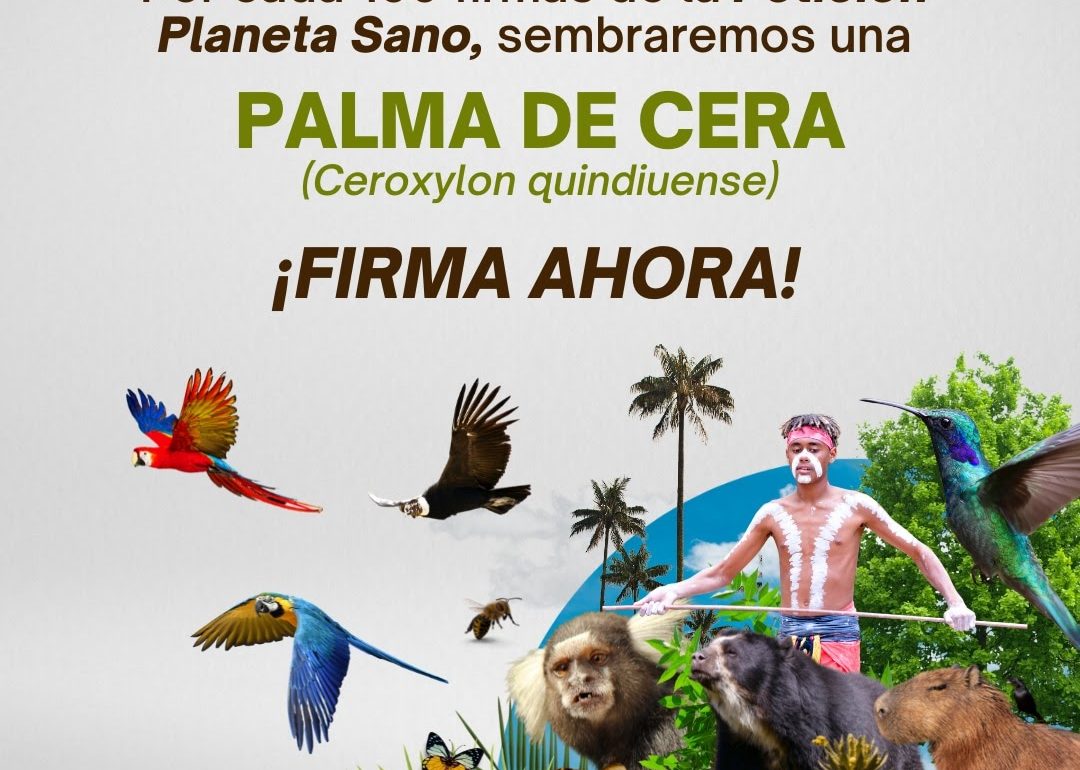More than 100,000 signatures from over 400 religious institutions were collected for the “Healthy Planet, Healthy People” petition, and presented by the Vatican delegation at the 26th United Nations Climate Change Conference (COP26).
Around the world, Catholics committed themselves to spread this message, especially those who are part of the Laudato Si’ Movement. In Colombia, several proposals were made, but the main one was motivated in social networks by advocates of the Laudato Si’ cause: “Signatures are not going to provide shade”, they commented, inciting us to plant trees.
Lina Sedano, coordinator of the Colombian chapter of MLS, shared a testimony of how they prepared at the national level to spread the petition and give visibility to the importance of the COP taking place in Glasgow.
—How did the Colombian chapter work on the signature gathering for the “Healthy Planet, Healthy People” petition?
—As a chapter in Colombia, we have carried out activities on different fronts. On the one hand, we started by calling Instagram influencers to share the campaign with them so that they could spread it on their networks.
In addition, two days of firmatones (signature races) were held in different cities and parishes led by our coordinating team, diocesan animators in formation, animators, and other religious communities. With this experience, we realized that physical signatures were very important and the fastest way to collect them. Activities were also promoted among Diocesan animators in formation and those who were part of educational institutions.
Among the comments, people began to appear who told us that instead of signatures, we should plant trees if we really wanted to contribute to biodiversity.
Taking into account the suggestions and seeing how to collect more signatures and be more effective with the campaign, we came up with the idea of planting trees to contribute to the biodiversity of our country. So, we contacted the Corporación Vida Andina, who have been keeping an eye on the movement and we made an agreement that for every 100 signatures that went into the campaign, we would plant a wax palm, which is our national tree and home to the yellow-eared parrot (an endangered species).
The campaign has moved among environmental groups in the region and we have collected about 200 signatures out of the more than 6700 collected by the Colombia chapter.
The campaign has allowed us to have a greater reach on networks such as Facebook and to make ourselves known (with all the pros and cons that this brings).
—How was the impact of the people in the local communities? Do people understand the importance of raising their voices during COP26?
—There is still a lack of awareness among the population about the importance of these summits and the decisions taken there. Because it is so global, local communities do not see themselves reflected in this type of event or it is not sufficiently publicized. Many do not sign because they do not believe that this signature can generate significant changes.
Collecting signatures has been a great challenge as a chapter because we are in pre-election times and many people doubt that the campaign can be effective. However, it has been very important to have the signatures and representation from the different regions of Colombia.
—Tell us about a testimony that has impressed you during this campaign.
—We were present at the climate strike last September 24, for it was a pleasant surprise that Laudato Si’ was known in secular environments, where they were encouraged to sign the petition, even knowing that it was led by a Catholic movement, it motivated them that Catholic communities were mobilizing around these issues.
Likewise, as we have more visibility on Facebook, there are comments from people who have interesting ideas such as planting fruit trees (we will surely keep them in mind in the future), we also have our “trolls”, who help us to work on patience and the way in which we give testimony and communicate what we do.
—Regarding the planting of wax palms, how do you plan to do it?
The wax palm is our national tree and home to the Yellow-eared Parrot. The planting of the palms will take place in the next few months. The idea is that when they are ready to be planted we can carry out the campaign together with Corporación Vida Andina, who is in charge of leading this initiative in the area (known as the coffee axis), taking advantage of the sowing season. We will be able to sensitize the Catholic community so that they do not buy the wax palm for Palm Sunday but use other alternatives.
Although the destruction of this palm for Palm Sunday has decreased, in some regions it continues to be used, affecting these two species (the wax palm and the yellow-eared parrot). Therefore, our contribution to the country’s biodiversity is to plant and contribute to the protection of this endangered species and thus be able to exercise the three pillars of our movement: advocacy (signature campaign), reflection (how to contribute to biodiversity), and action (planting).
Finally, what we have learned in this campaign is to listen, to understand what others expect from us as a movement, as leaders of this initiative, to be creative to look for alternatives if our plans do not work, and to know how to give testimony when it becomes clear that people do not agree with what we are doing.










